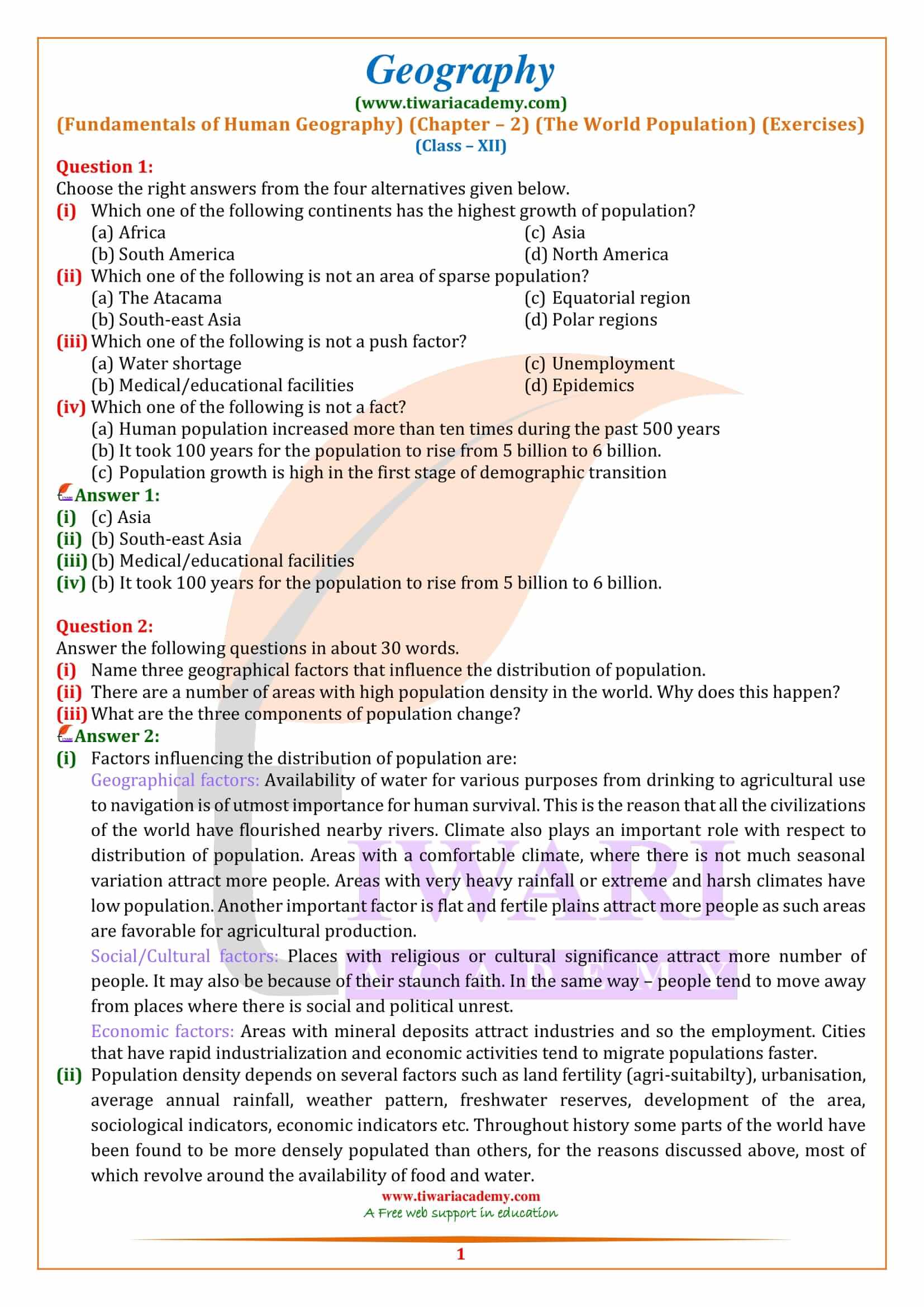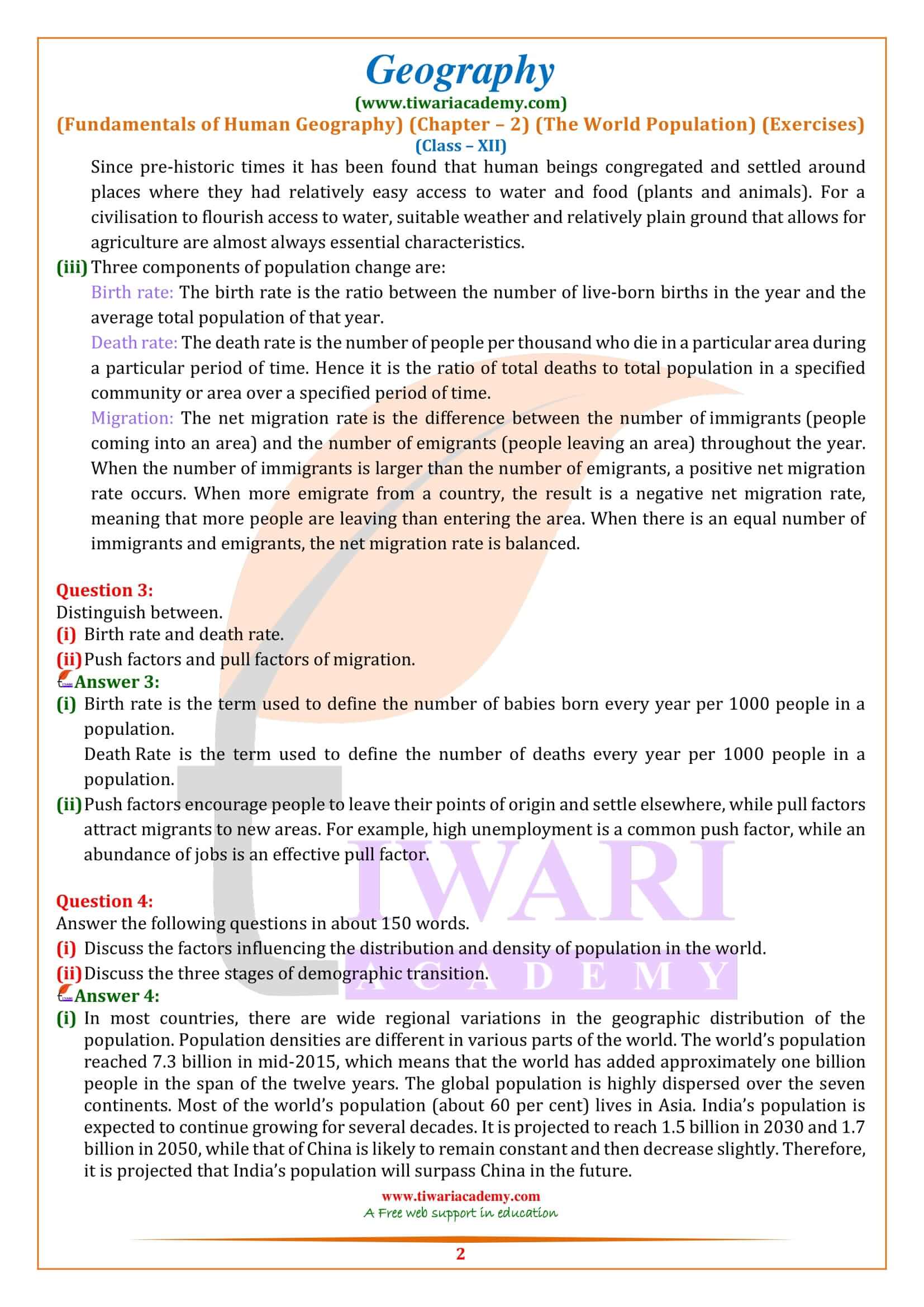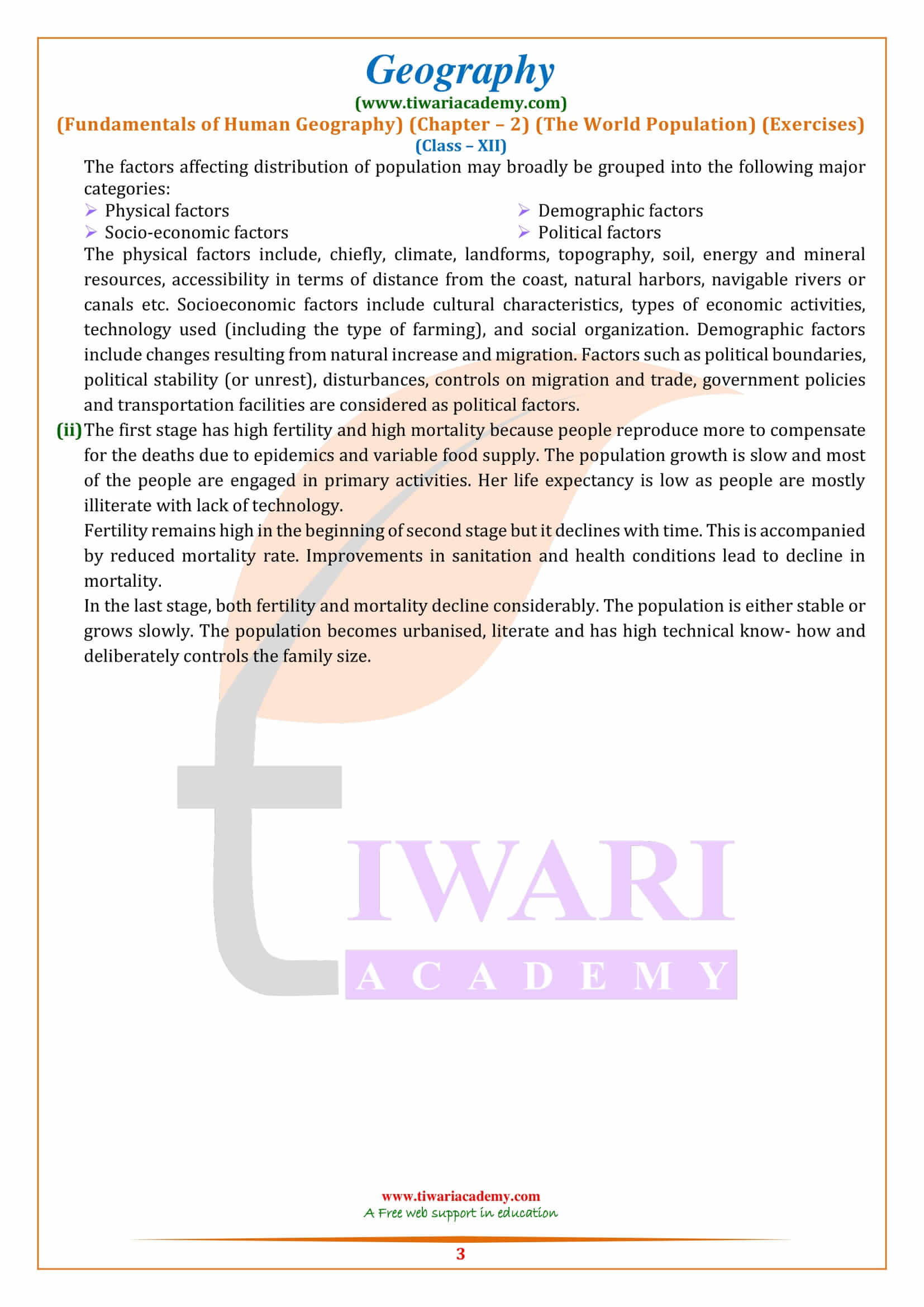NCERT Solutions for Class 12 Geography Chapter 2 The World Population Distribution, Density and Growth in Hindi and English Medium updated for session 2024-25. Class 12 Geography unit 2 chapter 2 of Fundamentals of Human Geography is solve here with MCQ and extra questions.
NCERT Solutions for Class 12 Geography Chapter 2
Class 12 Geography Chapter 2 The World Population Distribution, Density and Growth Question Answers
Discuss the factors influencing the distribution and density of population in the world.
In most countries, there are wide regional variations in the geographic distribution of the population. Population densities are different in various parts of the world. The world’s population reached 7.3 billion in mid-2015, which means that the world has added approximately one billion people in the span of the twelve years. The global population is highly dispersed over the seven continents. Most of the world’s population (about 60 per cent) lives in Asia. India’s population is expected to continue growing for several decades. It is projected to reach 1.5 billion in 2030 and 1.7 billion in 2050, while that of China is likely to remain constant and then decrease slightly. Therefore, it is projected that India’s population will surpass China in the future.
The factors affecting distribution of population may broadly be grouped into the following major categories:
- Physical factors
- Socio-economic factors
- Demographic factors
- Political factors
The physical factors include, chiefly, climate, landforms, topography, soil, energy and mineral resources, accessibility in terms of distance from the coast, natural harbors, navigable rivers or canals etc. Socioeconomic factors include cultural characteristics, types of economic activities, technology used (including the type of farming), and social organization. Demographic factors include changes resulting from natural increase and migration. Factors such as political boundaries, political stability (or unrest), disturbances, controls on migration and trade, government policies and transportation facilities are considered as political factors.
Class 12 Geography Chapter 2 MCQ
Which one of the following continents has the highest growth of population?
Which one of the following is not an area of sparse population?
Which one of the following is not a push factor?
Which one of the following is not a fact?
Name three geographical factors that influence the distribution of population.
Factors influencing the distribution of population are:
Geographical factors: Availability of water for various purposes from drinking to agricultural use to navigation is of utmost importance for human survival. This is the reason that all the civilizations of the world have flourished nearby rivers. Climate also plays an important role with respect to distribution of population. Areas with a comfortable climate, where there is not much seasonal variation attract more people. Areas with very heavy rainfall or extreme and harsh climates have low population. Another important factor is flat and fertile plains attract more people as such areas are favorable for agricultural production.
Social/Cultural factors: Places with religious or cultural significance attract more number of people. It may also be because of their staunch faith. In the same way – people tend to move away from places where there is social and political unrest.
Economic factors: Areas with mineral deposits attract industries and so the employment. Cities that have rapid industrialization and economic activities tend to migrate populations faster.
There are a number of areas with high population density in the world. Why does this happen?
Population density depends on several factors such as land fertility (agri-suitabilty), urbanisation, average annual rainfall, weather pattern, freshwater reserves, development of the area, sociological indicators, economic indicators etc. Throughout history some parts of the world have been found to be more densely populated than others, for the reasons discussed above, most of which revolve around the availability of food and water.
Since pre-historic times it has been found that human beings congregated and settled around places where they had relatively easy access to water and food (plants and animals). For a civilisation to flourish access to water, suitable weather and relatively plain ground that allows for agriculture are almost always essential characteristics.
What are the three components of population change?
Three components of population change are:
Birth rate: The birth rate is the ratio between the number of live-born births in the year and the average total population of that year.
Death rate: The death rate is the number of people per thousand who die in a particular area during a particular period of time. Hence it is the ratio of total deaths to total population in a specified community or area over a specified period of time.
Migration: The net migration rate is the difference between the number of immigrants (people coming into an area) and the number of emigrants (people leaving an area) throughout the year. When the number of immigrants is larger than the number of emigrants, a positive net migration rate occurs. When more emigrate from a country, the result is a negative net migration rate, meaning that more people are leaving than entering the area. When there is an equal number of immigrants and emigrants, the net migration rate is balanced.
Distinguish between Birth rate and death rate.
Birth rate is the term used to define the number of babies born every year per 1000 people in a population.
Death Rate is the term used to define the number of deaths every year per 1000 people in a population.
Distinguish between Push factors and pull factors of migration.
Push factors encourage people to leave their points of origin and settle elsewhere, while pull factors attract migrants to new areas. For example, high unemployment is a common push factor, while an abundance of jobs is an effective pull factor.
Discuss the three stages of demographic transition.
The first stage has high fertility and high mortality because people reproduce more to compensate for the deaths due to epidemics and variable food supply. The population growth is slow and most of the people are engaged in primary activities. Her life expectancy is low as people are mostly illiterate with lack of technology. Fertility remains high in the beginning of second stage but it declines with time. This is accompanied by reduced mortality rate. Improvements in sanitation and health conditions lead to decline in mortality.
In the last stage, both fertility and mortality decline considerably. The population is either stable or grows slowly. The population becomes urbanised, literate and has high technical know- how and deliberately controls the family size.





